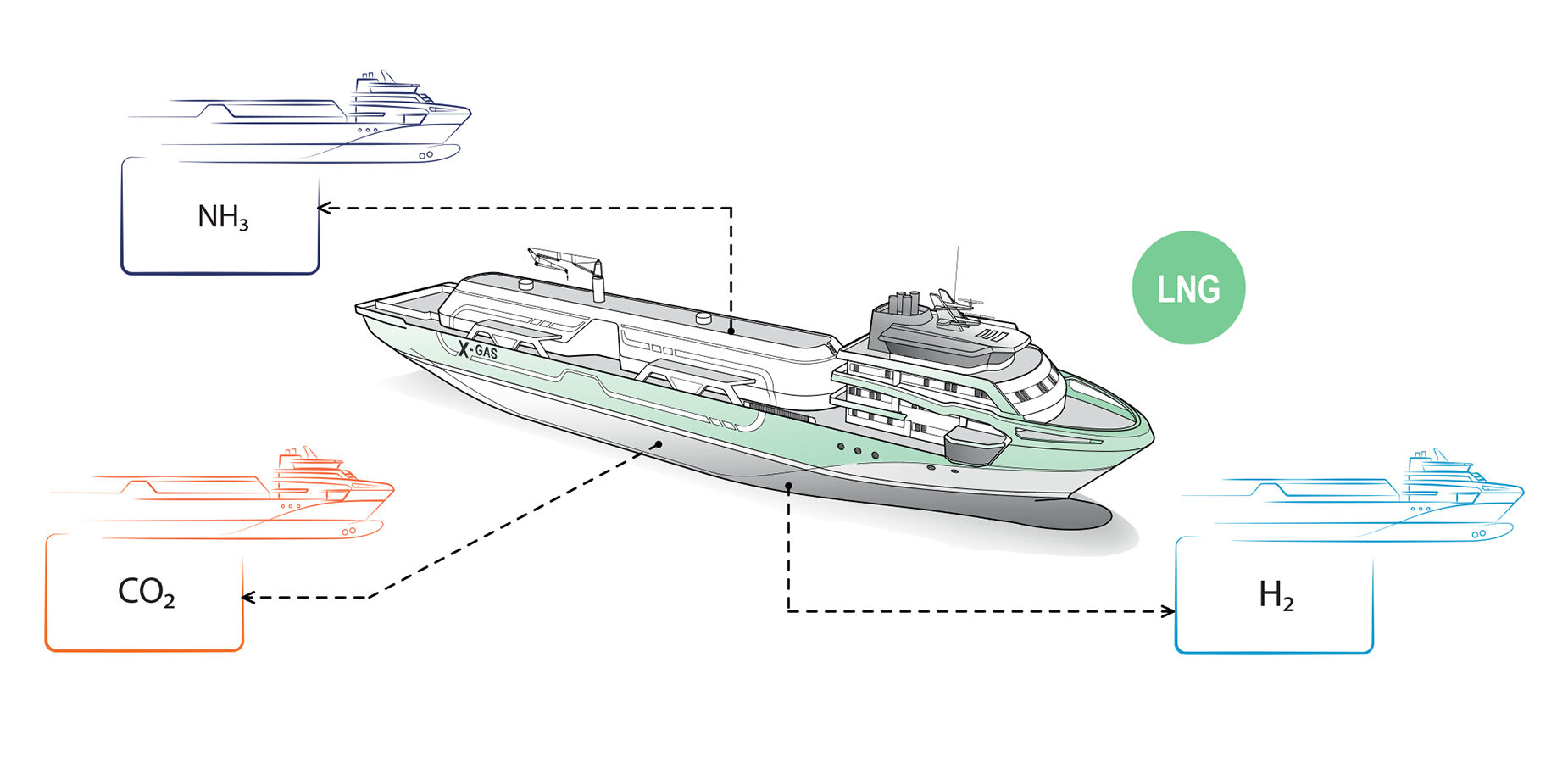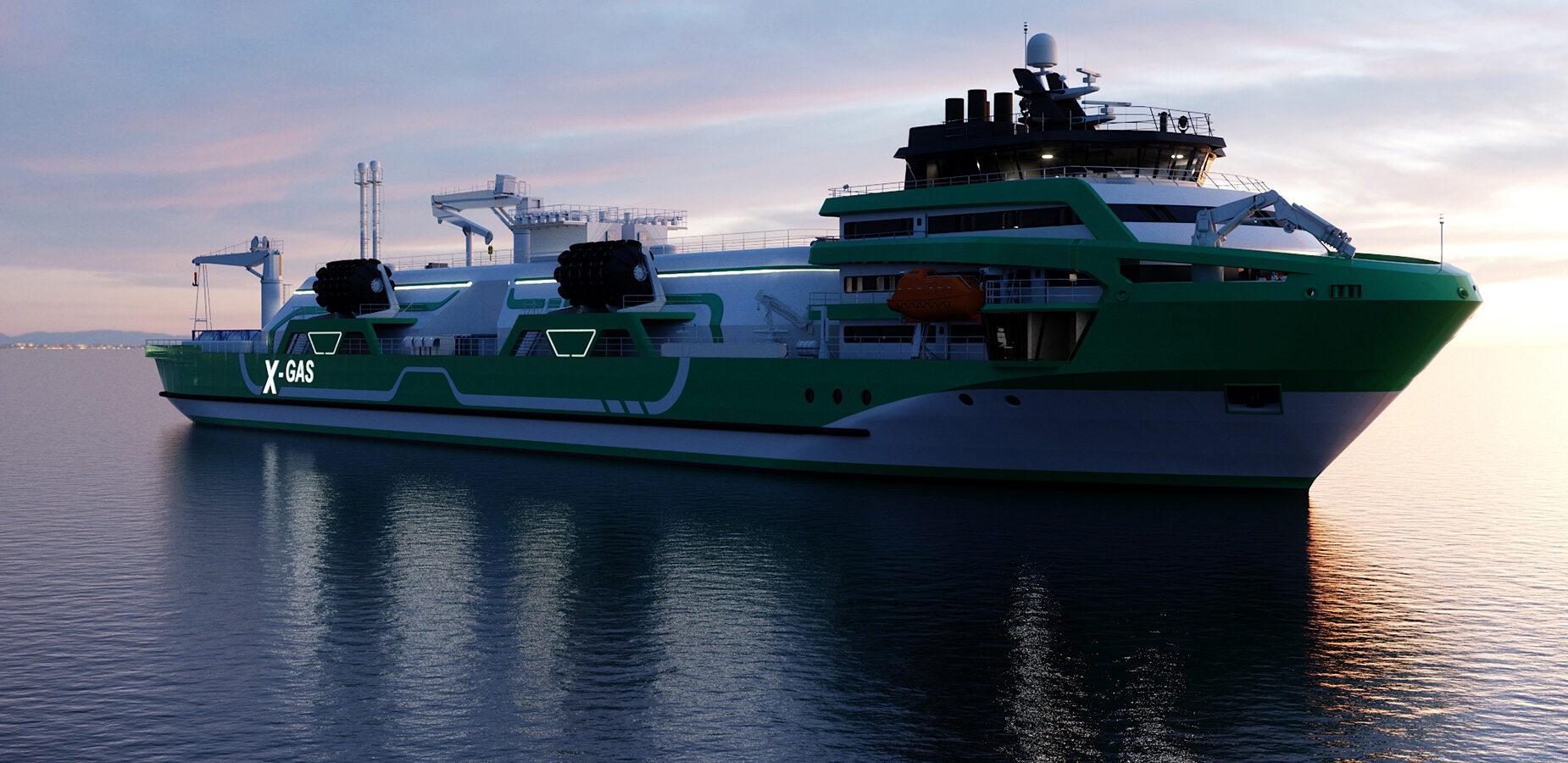X-Gas Project leads in next generation sustainable fuel transport
The X-gas Project is a series of innovative and unconventional, medium-capacity LNG/ Gas bunkering tankers designed by KNUD E. HANSEN. The flagship design of the project is a 126.5 meter vessel with a total cargo capacity of 9,000 cubic meters, split between two Type C tanks. The platform, however, is highly customizable and can be tailored to accommodate a range of tank capacities, as well as various containment systems including membrane tanks.

The most unique feature of the X-gas platform is a low-profile, forward deck house. This enables the vessel to safely approach and pull alongside cruise ships with low-hanging lifeboats. This also minimizes the need for ballast during cargo transfer, thereby lowering operational costs. Lastly, the forward deck house allows for larger cargo tanks without impeding bridge visibility.
For improved maneuvering and safety, the design features two propulsion thrusters aft and two bow thrusters, as well as an autodocking system for alongside mooring.
The design features a novel and extremely fuel-efficient diesel electric power and propulsion plant consisting of one of the most fuel efficient dual-fuel 4-stroke engines available. Integrated with the propulsion plant is an Energy Storage System (ESS) with a lithium-ion battery bank that allows for engine load optimization with reduced methane slip. The batteries also provide all of the power required during cargo transfer, resulting in no emissions or exhaust in way of the ship being bunkered, an especially important feature for passenger vessels.

Boil-off gas from the cargo tanks is captured and consumed in the dual-fuel engines and the energy surplus generated can be stored in the batteries. Waste heat from the engine cooling water is converted to electric and thermal power through a number of ORC (Organic Rankine Cycle) waste heat units. As a novel approach, wasted energy captured during operation can be stored in accumulators and released as required to drive absorption chiller and reduce the electrical load onboard. This approach boosts energy efficiency to a very high level.
Another unique feature of the design is an aft ‘energy bay’ that allows the vessel to provide containers loaded with fuel or stored electrical power to a receiving vessel. It also allows the vessel to provide fully charged battery banks to remote locations ashore, where current infrastructure does not allow sufficient power to be provided.
The principal particulars of the baseline vessel are as follows:
Length (overall) 126.5 meters
Breadth (moulded) 20.5 meters
Design Draught 5.25 meters
Service Speed 13 knots
Ice Class 1A
Deadweight 4,775 tonnes
LNG Capacity 9,000 cubic meters
Crew Capacity up to 16
Through the X-gas Project, KNUD E. HANSEN has harnessed its vast experience and reputation for designing groundbreaking, energy efficient ships to create a new platform that will support cleaner energy for generations to come. KNUD E. HANSEN is already expanding the X-gas platform to accommodate zero emission fuels such as liquid and compressed hydrogen to meet the growing demand in this sector.

- ExxonMobil halts 1-Bft3d blue hydrogen project in Texas
- Aramco and Yokogawa commission multiple autonomous control AI agents at Fadhili gas plant
- Ukraine will resume gas imports via Transbalkan route in November
- Mitsubishi to inject $260 MM into Brunei LNG project
- Freeport LNG (U.S.) on track to take in more natgas on Thursday after unit outage



Comments